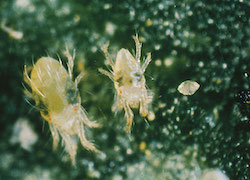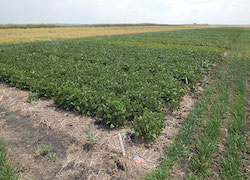| |
| |
 |
 |
| |
 |
|
@{mv_date_MMM d, yyyy}@ |
|
| |
 Manitoba’s protein research strategy will help develop industry opportunities and deepen connections.
» Read more...
Manitoba’s protein research strategy will help develop industry opportunities and deepen connections.
» Read more...
Interested parties can add their comments or concerns prior to June 3.
» Read more...
Up to $770,000 will go toward the Canada Organic Trade Association to support market development for organic products.
» Read more...
|
| |
 |
 |
| |
|
| |

New opportunities continue to take shape in digital farming. This month we are showcasing variable rate (VR) fertility scripting capabilities on the Climate FieldView™ platform.
Fertility management is always an important part of growing a great crop. FieldView’s easy to use VR fertility scripting feature allows you to have the power to make the most of your fertilizer applications.
FieldView’s VR fertility scripting feature allows you to create your own prescriptions uniquely tailored to the needs of your farm – allowing you place your fertilizer exactly where you want, at the right rate.
Read more about how FieldView makes optimizing fertility simple to streamline efficiency.
» Learn more... |
| |
|
| |
 Spider mites are small, but mighty – mighty damaging. If conditions are right and the mites can get to work in the early R stages of soybean development, they can cause yield loss as high as 60 per cent without even being noticed. And, for areas that endured drought conditions in the summer, it’s easy to mistake spider mite damage from that of drought damage. So how can one diagnose spider mites properly?
» Learn more...
Spider mites are small, but mighty – mighty damaging. If conditions are right and the mites can get to work in the early R stages of soybean development, they can cause yield loss as high as 60 per cent without even being noticed. And, for areas that endured drought conditions in the summer, it’s easy to mistake spider mite damage from that of drought damage. So how can one diagnose spider mites properly?
» Learn more... |
| |
 Dry beans bring high value to growers. Now, growers and researchers are interested in evaluating dry beans grown under dryland conditions as opposed to irrigation, using solid seeded production systems as a potentially profitable crop diversification opportunity. Under irrigation, dry beans are grown using a wide row cropping system and specialized harvest equipment. However, the key to expansion in dryland will be to find an agronomic production system that allows farmers to use existing equipment.
» Learn more...
Dry beans bring high value to growers. Now, growers and researchers are interested in evaluating dry beans grown under dryland conditions as opposed to irrigation, using solid seeded production systems as a potentially profitable crop diversification opportunity. Under irrigation, dry beans are grown using a wide row cropping system and specialized harvest equipment. However, the key to expansion in dryland will be to find an agronomic production system that allows farmers to use existing equipment.
» Learn more... |
| |
 |
 |
| |
|
| |
 The damaging clubroot disease prefers acidic soils – and the application of lime to increase soil pH might reduce the disease. Limestone is the main source for agricultural application to neutralize soil pH and improve plant growth. Recent research trials from the University of Alberta evaluated the potential of hydrated lime for reducing clubroot disease development under field conditions. Read more about how those trials played out.
» Read more...
The damaging clubroot disease prefers acidic soils – and the application of lime to increase soil pH might reduce the disease. Limestone is the main source for agricultural application to neutralize soil pH and improve plant growth. Recent research trials from the University of Alberta evaluated the potential of hydrated lime for reducing clubroot disease development under field conditions. Read more about how those trials played out.
» Read more...
Researchers are investigating a broad-spectrum plant defense approach as an alternative option for important crop diseases in Western Canada, where genetic plant resistance is lacking or chemical treatments are not sufficient. They are interested in determining whether natural defense priming agents may offer an alternative approach and/or work in combination with current strategies to fight against Fusarium head blight (FHB) in wheat and other diseases such as Ascochyta blight of chickpea and Aphanomyces root rot of pea and lentil.
» Read more...
|
| |
|
| |
 Buying ESN at the same time you purchase urea for the season makes perfect economic sense. ESN is comprised of urea; therefore, its price will generally trend in the same direction as the granular urea markets. Having a plan allows you to make the most out of your time and money.
» Learn more...
Buying ESN at the same time you purchase urea for the season makes perfect economic sense. ESN is comprised of urea; therefore, its price will generally trend in the same direction as the granular urea markets. Having a plan allows you to make the most out of your time and money.
» Learn more... |
|
 Spring is quickly approaching and corn growers in Ontario are growing eager to start planting. But before you begin, consider all the factors that go into your spring seeding plan and ensure you're setting your corn crop up for success from the get-go. In this episode of Inputs, Ben Rosser, corn specialist with the Ontario Ministry of Agriculture, Food and Rural Affairs, shares advice to help kick off your corn season, from planting dates and soil moisture to navigating a spring frost.
» Listen now...
Spring is quickly approaching and corn growers in Ontario are growing eager to start planting. But before you begin, consider all the factors that go into your spring seeding plan and ensure you're setting your corn crop up for success from the get-go. In this episode of Inputs, Ben Rosser, corn specialist with the Ontario Ministry of Agriculture, Food and Rural Affairs, shares advice to help kick off your corn season, from planting dates and soil moisture to navigating a spring frost.
» Listen now... |
| |
|
| |

|
| |
| |














